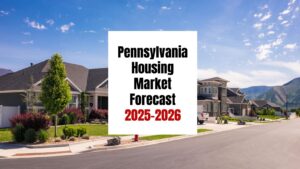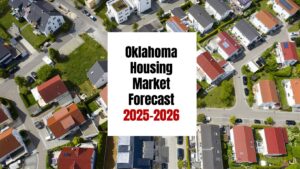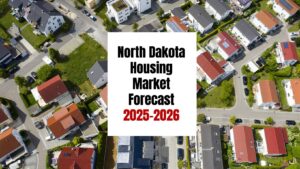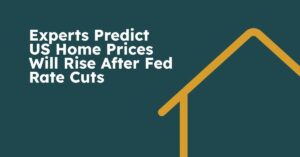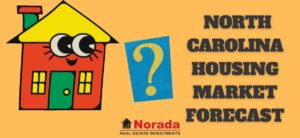Thinking about buying a home in South Carolina? The South Carolina housing market is evolving, transitioning from a highly competitive seller's market to a more balanced environment. While prices remain relatively strong, the increased inventory and decreased sales volume offer a more favorable climate for buyers.
This in-depth guide will explore the key aspects of the South Carolina housing market, giving you the information you need to navigate exciting, yet complex, market.
South Carolina Housing Market Trends: A Deep Dive
Home Sales
The number of homes sold in South Carolina paints a compelling picture of market activity. According to Redfin's September 2024 data, 5,658 homes were sold, marking an 8.7% decrease year-over-year. This slowdown suggests a cooling market, potentially driven by factors like rising interest rates and inflation.
However, it's important to look at this in context. A decrease doesn't automatically mean a “crash”; it's a shift towards a more balanced market after several years of intense competition.
Personally, I've observed this shift firsthand. While the frenetic pace of the previous few years has slowed, this also allows buyers to be more discerning and less rushed in their decision-making. This is a good thing for many buyers who found themselves outbid repeatedly before.
Home Prices
While the number of sales decreased, home prices in South Carolina held steady, demonstrating remarkable resilience in the face of fewer transactions. The median sale price sat at $375,400 in September 2024, a 2.3% increase year-over-year. This shows that even with fewer homes selling, existing inventory retains considerable value.
However, this growth wasn't uniform across the state. Some areas experienced significantly higher price growth. Let's take a look at some key areas:
Table 1: Top 10 South Carolina Metros with Fastest-Growing Sales Prices (September 2024)
| Metro Area | Year-over-Year Price Growth (%) |
|---|---|
| Mount Pleasant, SC | 20.6% |
| Aiken, SC | 20.5% |
| Hilton Head Island, SC | 16.6% |
| Greer, SC | 15.6% |
| Lexington, SC | 15.3% |
| Florence, SC | 14.7% |
| Socastee, SC | 14.6% |
| Carolina Forest, SC | 11.6% |
| North Charleston, SC | 11.6% |
| North Augusta, SC | 10.4% |
This table highlights the significant price appreciation in certain regions. Factors driving these increases may include strong local economies, desirable amenities, and limited housing supply. This variability underlines the importance of focusing on specific areas when assessing South Carolina real estate investment potential.
Housing Supply
The number of homes for sale in South Carolina in September 2024 was 31,038, a 16.9% increase year-over-year. This increase in inventory suggests a shift from the seller's market of recent years towards a more balanced market. The months of supply — a key indicator of market balance — increased to 4 months, from 3 months the previous year. Four months of supply generally suggests a balanced market, where neither buyers nor sellers have a significant advantage.
Table 2: South Carolina Housing Supply (September 2024)
| Metric | Number | Year-over-Year Change (%) |
|---|---|---|
| Homes for Sale | 31,038 | +16.9% |
| Newly Listed Homes | 6,951 | -1.3% |
| Months of Supply | 4 | +1 |
This increase in supply is a welcome change for buyers, giving them more choices and potentially reducing the pressure to make rushed decisions. However, new listings are slightly down, indicating slower seller activity, possibly a result of continued high interest rates.
Market Trends
The interplay of sales, prices, and supply reveals key market trends:
- Cooling Market: Fewer sales and a rising supply suggest a cooling market. The intense buyer competition of previous years is easing.
- Stable Prices: Despite fewer sales, home prices remain relatively strong, indicating continued demand and value retention.
- Increased Buyer Choice: More homes are available, giving buyers more options and less pressure to overpay.
- Regional Variations: Price growth varies considerably across the state, highlighting the importance of local market analysis.
- Shifting to a Balanced Market: The increased housing supply and reduced sales suggest a transition away from a seller's market toward a more balanced market.
Competition in the South Carolina Housing Market
In September 2024, 13.0% of homes sold above the asking price, down 4.9 percentage points from the previous year. This signifies a decline in bidding wars and a decrease in buyer competition, reinforcing the shift to a more balanced market. Conversely, 26.6% of homes experienced price reductions, a 2.3 percentage point increase year-over-year. This further underscores the changing dynamic; sellers might need to adjust their pricing strategies to find buyers in a less competitive environment.
Table 3: South Carolina Market Competition (September 2024)
| Metric | Percentage | Year-over-Year Change |
|---|---|---|
| Homes Sold Above List Price | 13.0% | -4.9 points |
| Homes with Price Drops | 26.6% | +2.3 points |
| Sale-to-List Price Ratio | 97.9% | -0.42 points |
Migration Trends and Their Impact
Redfin's data reveals that South Carolina continues to be a popular destination for people relocating from other parts of the United States. This migration adds to the demand for housing, impacting pricing and competition levels, especially in specific areas. The top ten inbound metro areas highlight South Carolina's appeal as a relocation destination.
Table 4: Top 10 Areas People are Moving to (July-September 2024)
| Rank | Metro Area | Net Inflow |
|---|---|---|
| 1 | Sacramento, CA | 6,700 |
| 2 | Myrtle Beach, SC | 4,300 |
| 3 | Salisbury, MD | 4,200 |
| 4 | Sarasota, FL | 4,200 |
| 5 | Portland, ME | 4,100 |
| 6 | Cape Coral, FL | 3,900 |
| 7 | Orlando, FL | 3,800 |
| 8 | Jacksonville, FL | 3,000 |
| 9 | Nashville, TN | 2,900 |
| 10 | Hilo, HI | 2,700 |
Table 5: Top 10 Areas People are Moving from (July-September 2024)
| Rank | Metro Area | Net Outflow |
|---|---|---|
| 1 | Los Angeles, CA | 34,800 |
| 2 | New York, NY | 28,900 |
| 3 | San Francisco, CA | 23,800 |
| 4 | Seattle, WA | 17,900 |
| 5 | Washington, DC | 15,200 |
| 6 | Chicago, IL | 8,400 |
| 7 | Philadelphia, PA | 6,000 |
| 8 | Boston, MA | 5,200 |
| 9 | Denver, CO | 3,100 |
| 10 | Dallas, TX | 2,900 |
South Carolina Housing Market Forecast 2024-2025
- Greenville Housing Market: Prices, Trends, Forecast
- Charleston Housing Market: Prices, Trends, Forecast
- Columbia SC Housing Market: Prices, Trends, Forecast
- Myrtle Beach Housing Market Trends and Forecast
- 10 Best Places To Retire In South Carolina
- Best Places To Live In South Carolina Near The Beach
- Best Places to Live in South Carolina for Families

